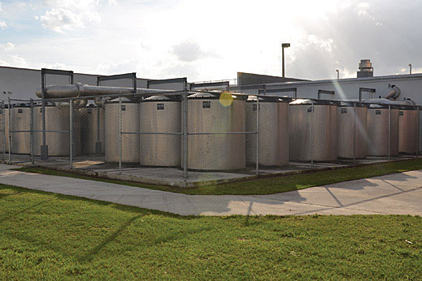 The St. Lucie County School District (SLCSD) in Florida was receiving failing grades when it came to energy efficiency. The K-12 district had one of the highest energy costs per sq ft out of all school districts in the state of Florida.
The St. Lucie County School District (SLCSD) in Florida was receiving failing grades when it came to energy efficiency. The K-12 district had one of the highest energy costs per sq ft out of all school districts in the state of Florida.
With this in mind, the district made a commitment to boost its scores when it came to HVAC efficiency. The strategy employed helped SLCSD save 30% to 40% on utility costs annually — in total, about $5 million in savings to date.
The solution
St. Lucie assembled an energy advisory team and partnered with the local utilities that supplied power to the district. Full-time energy manager Sean P. Murray was hired to develop and execute a strategy to reduce utility costs as well as track and monitor results. Murray implemented ice-based thermal energy storage into existing facilities and managed a behavior modification program. Additional strategies included utility rate-structure modifications, control system enhancements, and other energy efficiency upgrades.
Calmac’s IceBank® thermal energy storage was identified as an important solution for reducing utility costs in the district’s facilities. Despite drawing power from two utilities that used very different pricing structures, energy storage would allow a facility drawing power from either utility company to shift energy usage away from expensive peak demand periods.
“We did our homework and looked at a variety of technologies,” said Murray. “After looking at Calmac and looking at (other options), we decided that there was no competition, that we were going to pick the Calmac tank based on a superior design and operation of those tanks.”
The first school to implement IceBank tanks in the form of a full storage system was Centennial High School. In this full storage system, high-efficiency Trane chillers create enough cooling at night (when outdoor temperatures are low and energy costs are less than half of what they are during the day), to cool the entire school from noon to 9 p.m. the next day. This cooling load is stored overnight as a block of ice in Calmac IceBank tanks. Then the next day, when school opens, the chillers satisfy the cooling load requirements. At noon, the stored ice is used to cool the school until 9 p.m. without any assistance from the chiller. This system is able to shift roughly 1,200 peak tons of cooling.
Electric utility costs savings for Centennial High School proved to be about $300,000 per year. By independently metering the chiller plant, Centennial High School was able to identify a 50% reduction in cooling costs due to energy storage.
Several schools like Centennial High School were able to take advantage of Florida Power & Light incentives that cover most of the cost of installation for full shift storage. However, not every school in the district is powered by Florida Power & Light, which uses time-of-use pricing. Many of the facilities in St. Lucie get electricity from Fort Pierce Utilities Authority (FPUA). FPUA implements a $10/kW demand charge and does not offer TOU rates incentives to help offset installations costs, so it was more effective to use partial storage systems in these schools.
The facilities using the partial storage system create and store enough ice to assist but not fully handle peak cooling requirements. Throughout the day, stored energy can be discharged to help the chillers provide cooling. Ice storage is used in tandem with the chiller to cool occupants during peak cooling load periods. This flexible system operation allows the schools to utilize smaller, more efficient chiller equipment and reduce the peak demand charge from the utility. One partial storage system at Lincoln Park Academy lowered cooling costs by 32%.
Additional upgrades
Other upgrades were also made to increase efficiency. Independent metering equipment was installed to separately meter various systems, which allowed St. Lucie to gather performance data and ensure optimal results from different upgrades and equipment. In order to improve the operation of the existing system, control system enhancements were implemented with minimal costs.
Other strategies were embraced to improve operational efficiency by reducing reheat conditions, including the use of occupancy sensors, which has minimized sub-cooling during unoccupied periods by reducing cooling airflow. Adjustments were also made to the pumping system to reduce the amount of chilled water flow. High-efficiency chiller equipment kept part-load efficiencies below 0.30 kW/ton. St. Lucie also saw a significant opportunity for savings by lowering outdoor air intake rates to lower system capacity.
In total, 15 facilities are using Calmac’s IceBank energy storage tanks. The schools using full shift strategies for their energy storage systems have saved over $615,000 annually in energy costs, a 50% reduction.
Partial storage strategies are also dramatically reducing operating costs. Lincoln Park Academy is a perfect example. Prior to installation, its three-year average energy costs were $475,000. One year after using partial energy storage, energy costs were down to $334,000 — a 32% annual reduction.


